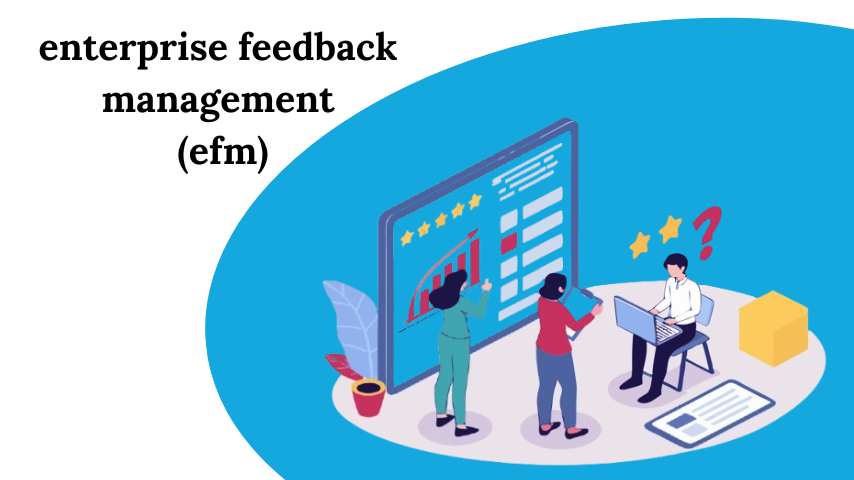EFM stands for Enterprise Feedback Management, a crucial system that helps organizations collect, analyze, and act on feedback from various stakeholders. In today’s data-driven business landscape, enterprise feedback management (EFM) has become an essential tool for companies seeking to improve customer experience, employee satisfaction, and overall business performance.
Understanding Enterprise Feedback Management (EFM)
Enterprise feedback management (EFM) is a systematic approach to gathering, processing, and utilizing feedback from multiple sources within an organization’s ecosystem. This comprehensive system enables businesses to make data-driven decisions by consolidating feedback from customers, employees, partners, and other stakeholders.
The Evolution of EFM Systems
The journey of EFM systems began with simple survey tools and has evolved into sophisticated platforms that integrate with various business systems. Here’s how EFM has transformed over the years:
- Early 1990s: Basic survey tools and manual feedback collection
- Late 1990s: Introduction of online surveys and digital feedback forms
- 2000s: Development of integrated feedback management systems
- 2010s: Advanced analytics and real-time feedback capabilities
- Present: AI-powered insights and predictive analytics integration
Key Components of an EFM System
Feedback Collection Methods
Modern EFM systems employ various channels to gather feedback:
- Online surveys and questionnaires
- Mobile feedback apps
- Social media monitoring
- Customer service interactions
- Website feedback widgets
- Point-of-sale feedback collection
- Email feedback campaigns
Data Analysis Tools
EFM platforms include powerful analytics capabilities:
- Text analytics for processing open-ended responses
- Sentiment analysis
- Statistical analysis tools
- Trend identification
- Predictive modeling
- Custom reporting features
Action Management
Effective EFM systems provide tools for:
- Task assignment and tracking
- Workflow automation
- Response management
- Performance monitoring
- Impact assessment
Benefits of Implementing EFM
Customer Experience Enhancement
- Better understanding of customer needs
- Faster response to customer concerns
- Improved product development based on feedback
- Enhanced customer satisfaction and loyalty
- Reduced customer churn
Operational Improvements
- Streamlined feedback collection processes
- More efficient resource allocation
- Better decision-making capabilities
- Reduced operational costs
- Improved employee productivity
Competitive Advantage
- Market trend identification
- Product innovation opportunities
- Enhanced brand reputation
- Better customer retention
- Increased market share
Implementing an EFM Strategy
Planning Phase
- Define clear objectives and goals
- Identify key stakeholders
- Select appropriate feedback channels
- Develop measurement metrics
- Create implementation timeline
Execution Phase
- Select and configure EFM software
- Train staff on new systems
- Establish feedback collection processes
- Set up analysis frameworks
- Create response protocols
Monitoring and Optimization
- Track performance metrics
- Analyze feedback patterns
- Adjust processes as needed
- Measure ROI
- Implement improvements
Common Challenges in EFM Implementation
Technical Challenges
- Integration with existing systems
- Data security concerns
- Technical expertise requirements
- System scalability issues
- Data quality management
Organizational Challenges
- Employee resistance to change
- Resource allocation
- Cultural adaptation
- Process standardization
- Maintaining consistency
Best Practices for EFM Success
Design and Implementation
- Keep surveys concise and relevant
- Use multiple feedback channels
- Ensure mobile compatibility
- Maintain data privacy compliance
- Regular system updates
Data Management
- Implement data validation processes
- Establish data governance policies
- Regular data cleaning and maintenance
- Secure storage solutions
- Backup procedures
Feedback Utilization
- Establish clear action protocols
- Set response time standards
- Create feedback loops
- Monitor implementation impact
- Regular performance reviews
Future Trends in EFM
Technology Integration
- AI and machine learning capabilities
- Natural language processing
- Predictive analytics
- IoT integration
- Blockchain for data security
User Experience
- Personalized feedback collection
- Real-time response systems
- Omnichannel feedback management
- Voice-enabled feedback
- Advanced visualization tools
What is the primary purpose of EFM?
Enterprise feedback management (EFM) primarily aims to systematically collect, analyze, and act on feedback from various stakeholders to improve business operations and customer experience.
How does EFM differ from basic survey tools?
EFM systems offer comprehensive feedback management capabilities, including advanced analytics, workflow automation, and integration with other business systems, while basic survey tools typically only collect responses.
Can small businesses benefit from EFM?
Yes, small businesses can benefit from EFM by implementing scaled solutions that help them better understand customer needs and improve their services accordingly.
How long does it take to implement an EFM system?
Implementation time varies depending on organization size and complexity, typically ranging from a few weeks for basic systems to several months for enterprise-wide solutions.
What ROI can companies expect from EFM?
While ROI varies by organization, companies often see improvements in customer satisfaction, reduced churn rates, and increased operational efficiency within the first year of implementation.
Conclusion
Enterprise feedback management (EFM) has become an indispensable tool for organizations seeking to improve their operations and customer experience through data-driven decision-making. As businesses continue to evolve in an increasingly digital landscape, the importance of effective feedback management cannot be overstated.
The success of an EFM implementation depends on careful planning, proper execution, and continuous monitoring and optimization. By following best practices and staying current with emerging trends, organizations can maximize the benefits of their EFM systems and maintain a competitive edge in their respective markets.
As technology continues to advance, EFM systems will become even more sophisticated, offering new capabilities and insights that can help organizations better serve their stakeholders. The future of EFM lies in its ability to adapt to changing business needs while providing actionable insights that drive meaningful improvements across the organization.
Investing in a robust EFM system is no longer optional for organizations that wish to remain competitive and responsive to stakeholder needs. By embracing EFM and its capabilities, businesses can create a more customer-centric organization that is better equipped to meet the challenges of tomorrow’s business environment.
